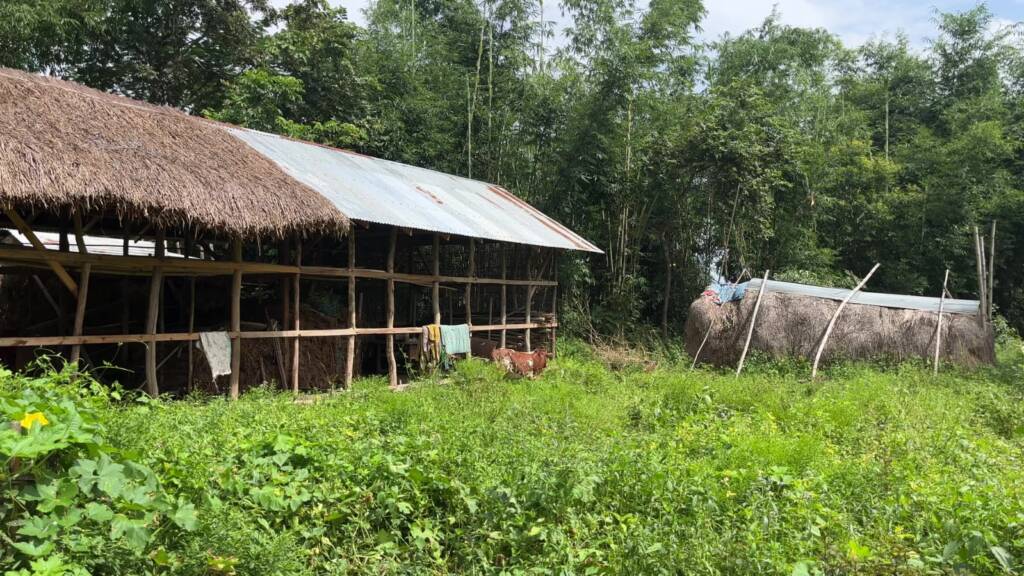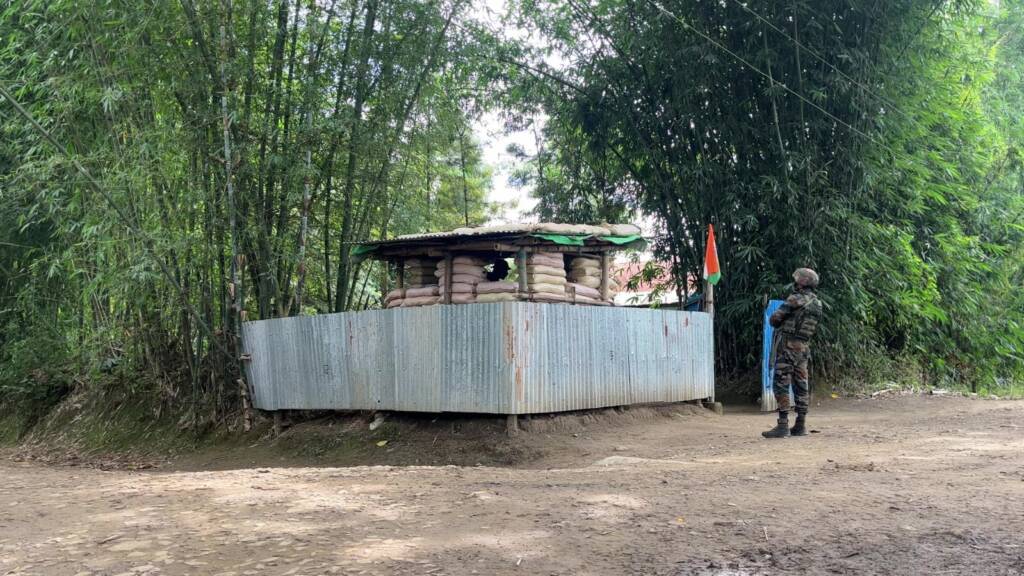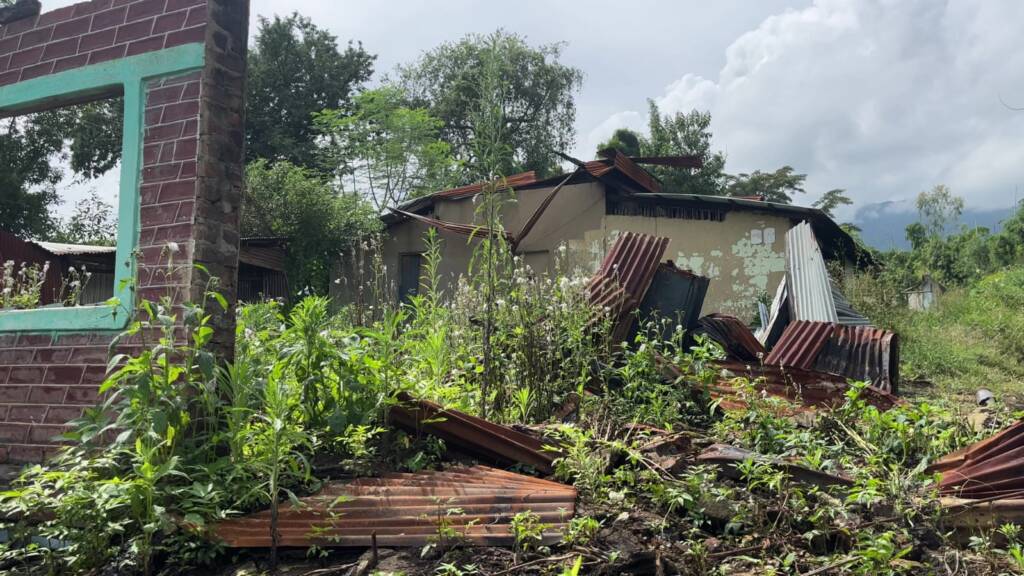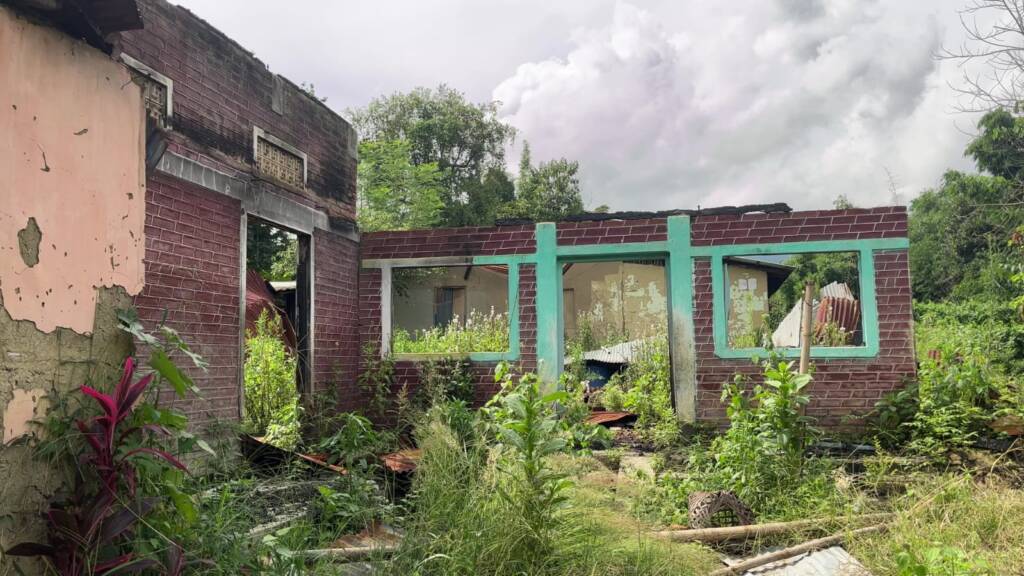Manipur violence: Back to village, but uneasy calm still grips Phougakchao
GUWAHATI: Rows of traditional houses, consumed by weeds, stood empty. India’s tri-colour affixed on bamboo poles upraised on some homes-a sign of patriotic diligence, and also a clear message to the security forces deployed for protecting the village not to train the guns to their fellow citizens.
This is Bishnupur district’s Phougakchao Mamang Leikai village abutting the border of Chin-Kuki-Zo community dominated Churachandpur district about 50 kilometres from Manipur’s capital city of Imphal.



The small settlement is one of the hotbeds of the unceasing ethnic conflicts in Manipur that unfolded on May 3 this year.
The quantum of the conflict may seem to have diminished with the onset of winter; and even more, the daily buzz in Imphal is easy enough to add a catalyst to the deception that normalcy has returned back in the restive Northeast state.
Nevertheless, some people, who returned back to their Phougakchao Mamang Leikai village from relief camps, narrated a different story.

An eerie calm pervades the village atmosphere with ethnic tension still lurking, threatening to rupture any moment.

Tell-tale signs of displacement and insecurity, a deep sense of fear and abandonment writ large among the locals.
Way to the village, one would encounter barricades manned by automatic rifles yielding security personnel all along.

Phougakchao Mamang Leikai is one of the few villages still standing of the 11 villages under the jurisdiction of Torbung gram panchayat, which has seen five neighbouring villages taken over by the sophisticatedly armed miscreants. This conflict has thrust the region into turmoil since early May.

Well-built cement bunkers stand as remnants of the initial defence by village volunteers who had tried to protect their homes.
These bunkers are now manned by the Indian Army, and village volunteers keep a vigilant eye on any suspicious activities.

The visit to Phougakchao was spurred by reports of internally displaced people slowly returning home, signalling a potential de-escalation of the violence.
Phougakchao Ekhai Awang Leikai, an enclave in the same cluster, had seen around 200-300 residents return. However, Churachandpur located in South Manipur, remains the epicentre of the ethnic violence. Torbung, on its border, a part of the Bishnupur district, was where the first act of communal violence occurred, setting off a series of events leading to a violent ethnic conflict between both the warring communities.
The initial act of violence on May 3 saw a large mob descend upon Torbung Bazar, pelting stones, attacking residents, and setting fire to houses and properties.
The violence quickly spread to neighboring villages, resulting in the destruction of numerous homes.
A female villager, Wangjam Bembem, witnessed the chaos and recounted the traumatic experience of that day.
Her tea stall, a source of livelihood, was vandalized and their homes were set ablaze. The violence was widespread, and the atmosphere remained tense.
“I am from Torbung. We live hand-to-mouth, working in our fields and running a small roadside tea stall. We are five of us–me, my husband and three children. The rioters were on a rampage. They robbed our property and burnt down our home,” Bembem said.
Abung Thangjam, a village volunteer, also a resident of Torbung Bazar village, disputed media reports of a return to normalcy, citing the restricted access to their own homes. Central security forces have prevented them from entering their village, and many residents have not been able to return.
“Frankly, few villagers have returned back, like people from Phougakchao Ekhai. But in the case of Torbung, other than the four to five households who had not fled from the area, no one has returned since the ethnic violence broke out on 3 May,” revealed Thangjam.
“Forget villagers returning back to Torbung Sabal Leikai, even we, village volunteers who guard and protect the villages, are prohibited to enter the place. I am afraid to say that the media reports of normalcy returning are not true,” Thanjam added.
The security situation is further complicated by intermittent firing, leaving villagers in constant fear. Security personnel are deployed, but their response has been criticized for perceived partiality.
“While the Central forces strictly made sure there were no retaliatory fire from this side and barricaded the entry-exit points of the village using their Casspir trucks (landmine-resistant ambush protected vehicles) and police barricade structures at night, to prevent movement to and from the village, the same rule does not apply on the other side,” claimed the village volunteers.
“Their settlements' main entry-exit points remain open. They fire bullets and bombs at will. As their movement is not restrained like ours, they move along the low-lying hill slopes and attack us as well as the neighboring areas of Kwakta, Terakhong, Terakhongsanbi, Tronglaobi, Naranseina, Phubala besides others,” the volunteers claimed.
Women, who keep vigil in the village, known as Meira Paibis, shared their experiences of living in fear, especially at night. Hijam Sanatombi (50) says that the level of violence has decreased, but sporadic firing still occurs, and security forces do not always respond.
“The Army does not retaliate and our volunteers do not have sophisticated arms. We keep running up and down. We cannot even live peacefully at our homes. We stay in groups, eat together, sleep together. That is how we are living here. If there is firing, we come out on the road, ready to run for our lives. This is the condition we are in. Guns, bombs to run away from,” Sanatombi recounted the existence in the village.
An attempt to enter the partially forsaken village of Torbung Sabal Leikai was blocked by troops of the Indian Army’s Kumaon Regiment manning a barricade, saying it was not safe. While negotiation was on to permit entry for media coverage, the video journalist who did not want to waste time, ventured ahead to capture images of the abandoned village, home to only a few residents.
The villagers, numbering around 10, who did return expressed mixed feelings about their safety. They found some solace in the presence of the Kumaon Regiment but remained cautious. Some reported continued firing in the area. Deep inside the village, other central paratroopers, the Central Reserve Police Force (CRPF), were on duty to keep off attacks from the hills, where bunkers could be seen. Villagers alleged that looting, arson and to some extent, levelling of the five villages of Torbung happened on CRPF’s watch.
Torbung Bangla, Waikhurok, Torbung Govindpur, Torbung Bazar and Kangvai were totally devastated and occupied by the armed miscreants while Torbung Sabal Leikai, Phougakchao Ikhai, and Phougakchao Ikhai Awang Leikai, all under the jurisdiction of Torbung gram panchayat, were partially damaged.
The conflict has caused significant disruptions in the villagers' lives. Fields have been neglected, homes abandoned, and once thriving businesses, like Leirenjam Bina's tea stall, have seen a sharp decline in sales. She appealed to the government to be more proactive to restore normalcy.
“Before this violence, life was so peaceful even though we had to meet existential challenges. Now because of the violence, our social and economic activities have all ceased. Weeds and grasses have consumed our homesteads as we are preoccupied with shielding our village from the violence. Now fear, sorrow and suffering have become our existence,” Bina added.
The conflict, which began on May 3, has taken a toll on the community, resulting in casualties, burnt homes, and the displacement of residents. Over 175 people have died, 1,108 are injured, and thousands have been rendered homeless. The conflict is now in its sixth month.
Torbung holds special significance for the Meitei community, given its mythological links as well as mentions of it in the history of the Second World War as the battle of Torbung.
Displaced villagers of Torbung termed a recent attempt to convert the abandoned villages of Torbung into a mass graveyard of those killed in the conflict as a land grabbing tactic. The graveyard proposal was thwarted by the Manipur High Court and the Union Home Minister Amit Shah.
Torbung being the immediate border with Churachandpur must be the key to resolve the on-going ethnic strife, and restoring normalcy which is a shared hope among the residents. The strife has left its mark on the region, but the desire for peace and harmony remains strong in Manipur.